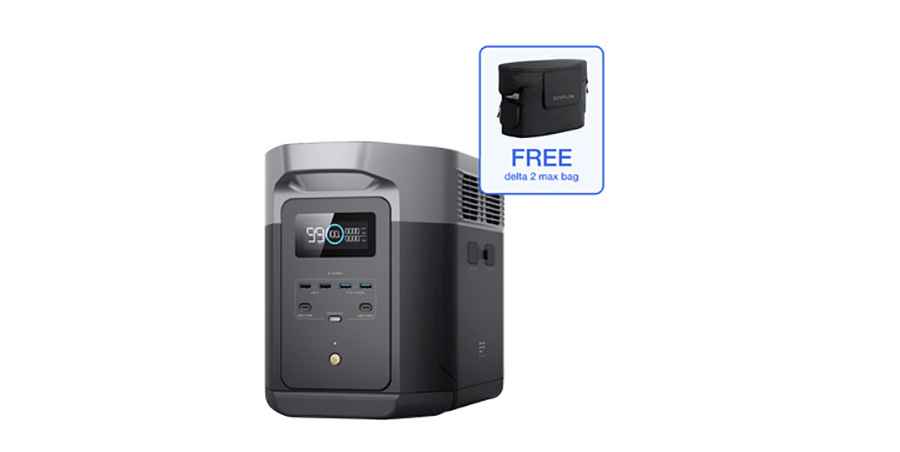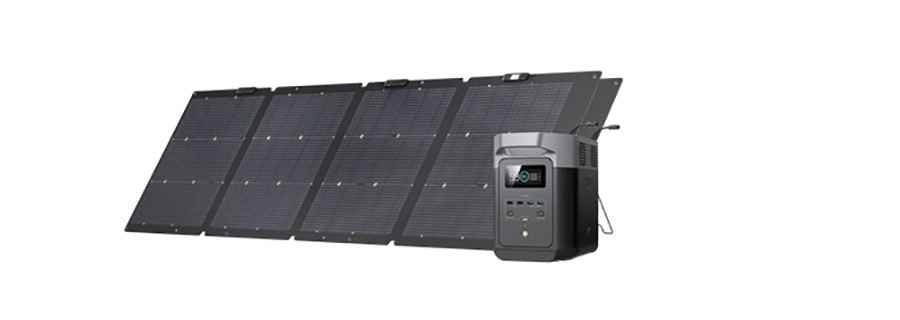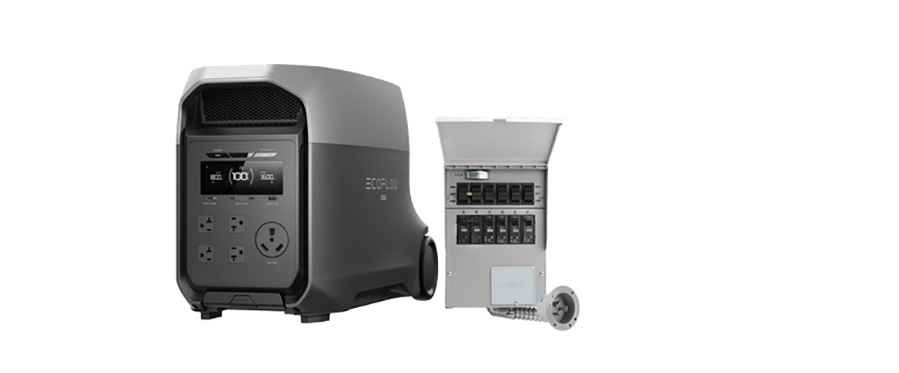How Can Portable Power Stations Revolutionize Your Camping Adventures?
Imagine you're deep in the wilderness, miles from civilization, when your phone dies just as you need to call for help or check critical weather updates. This nightmare scenario highlights a fundamental challenge facing modern campers: how to maintain essential power access without sacrificing the authenticity of outdoor experiences. Traditional generators roar like chainsaws, belching fumes that ruin the natural ambiance, while basic battery packs drain quickly under real-world demands.

Portable power stations have emerged as the game-changing solution that bridges this gap, delivering reliable, clean energy wherever your adventures take you. These compact devices offer unprecedented freedom to explore remote locations while maintaining connectivity, safety, and comfort. Whether you're a weekend warrior seeking convenient car camping or a serious backcountry explorer pushing into uncharted territory, portable power stations eliminate the anxiety of dead batteries and failed equipment. They transform camping from a test of endurance into a sustainable adventure where you control your energy independence without compromise.
Breaking Free from Traditional Power Limitations
Gas generators have long dominated outdoor power solutions, but their drawbacks make them increasingly impractical for modern camping. The constant drone of a motor shatters the peaceful wilderness atmosphere you traveled miles to experience, while exhaust fumes contaminate fresh air and require you to store volatile fuel safely. Maintenance demands—oil changes, spark plug replacements, carburetor cleaning—add complexity that contradicts camping's simplicity. Standard battery packs seem convenient until reality hits: they typically provide just one or two phone charges before depleting completely, leaving you stranded during multi-day trips. Solar panels offer clean energy but become useless under cloud cover or dense forest canopies, exactly when you need backup power most. Improvised solutions like car batteries with inverters create serious safety hazards, including fire risks and toxic gas exposure in confined spaces. This reliability gap becomes critical in remote locations where equipment failure isn't just inconvenient—it's potentially dangerous, leaving you without communication, navigation, or emergency lighting when situations turn serious.

Portable Power Stations: Your Off-Grid Energy Solution
Portable power stations combine high-capacity lithium batteries with built-in inverters to deliver household-quality electricity anywhere you roam. Unlike pieced-together systems, these integrated units convert stored DC power into standard AC outlets, USB ports, and 12V car sockets through a single compact housing. The technology's silent operation means you hear only crackling campfires and rustling leaves, while zero emissions preserve pristine air quality and eliminate fuel storage headaches. Modern lithium chemistry delivers impressive energy density—some units pack 500 watt-hours into packages weighing just 15 pounds, making them genuinely portable for hiking beyond trailheads. This versatility shines across camping styles: car campers power full-size refrigerators for extended trips, backpackers charge essential electronics without weight penalties, and RV enthusiasts supplement onboard systems during boondocking adventures. Recent engineering advances have dramatically improved capacity-to-weight ratios, with today's stations offering three times the power of equivalently-sized models from just five years ago, transforming what once seemed like luxury into practical necessity for serious outdoor enthusiasts.
Essential Components Demystified
Battery chemistry fundamentally determines performance characteristics and lifespan. Lithium iron phosphate (LiFePO4) batteries endure 3,000+ charge cycles and tolerate temperature extremes better than standard lithium nickel manganese cobalt (NMC) cells, though NMC variants pack more energy into smaller spaces—ideal when every ounce matters. Inverter quality separates reliable stations from frustrating failures; pure sine wave inverters deliver clean power that safely runs sensitive electronics like laptops and medical devices, while cheaper modified sine wave versions risk damaging equipment or causing erratic performance. Solar charging compatibility extends your range indefinitely—look for MPPT (maximum power point tracking) controllers that extract 30% more energy from panels compared to basic PWM systems. Output configurations matter tremendously: multiple USB-C ports with power delivery handle modern devices, while varied AC outlets and 12V sockets simultaneously power different equipment types without adapters cluttering your setup.

Critical Features for Outdoor Enthusiasts
Weight becomes the ultimate deciding factor for backpackers who measure every ounce—stations exceeding 20 pounds force difficult trade-offs with food, shelter, or safety gear. Calculate your actual capacity needs by totaling device watt-hours: a smartphone requires roughly 15Wh per charge, tablets need 30-40Wh, while laptops consume 50-100Wh depending on size. A 300Wh station realistically provides three days of essential electronics for solo travelers, while groups sharing devices need 500Wh minimum to avoid rationing power anxiously. Rugged construction matters tremendously in outdoor environments where drops onto rocks, dust infiltration, and temperature swings test equipment limits—look for reinforced corners, sealed ports with rubber gaskets, and IP ratings above IP54 for weather resistance. Multiple charging methods provide critical redundancy: solar panels generate power during stationary days, car charging replenishes batteries during transit, and AC wall charging maximizes speed before departures. Fast charging technology transforms brief civilization stops into full recharge opportunities—advanced systems like those found in EcoFlow's X-Stream technology reach 80% capacity in under two hours compared to overnight waits with standard chargers, letting you maximize adventure time rather than waiting tethered to outlets.
Balancing Power and Portability
Evaluate stations using weight-to-watt-hour efficiency metrics: dividing total weight by capacity reveals true portability, with ratios below 0.06 pounds per watt-hour representing excellent performance for serious hiking. Compact rectangular designs fit efficiently in vehicle storage compartments and backpack side pockets, while awkward shapes waste precious space regardless of specifications. Ergonomic carry handles positioned at balance points enable comfortable one-handed transport over uneven terrain, whereas poorly placed grips force awkward two-handed carries that occupy hands needed for trekking poles or navigation. Test weight distribution before purchasing—top-heavy designs tip easily on uneven surfaces, potentially damaging ports or internal components during transport.
Real-World Camping Performance
Field testing reveals that modern portable power stations reliably power a 45-liter electric cooler for 10+ hours on a single charge, maintaining food safety during hot summer trips without ice mess. Rapid charging capabilities deliver 80% capacity in just one hour through standard wall outlets—a game-changer when stopping briefly at visitor centers or ranger stations between remote campsites. This rapid replenishment means a lunch break provides enough power for another full day, eliminating the anxiety of rationing electricity. Modular expansion capabilities let you double capacity by connecting additional battery units, adapting to longer expeditions without replacing your entire system. Solar input optimization accepts up to 220W panels, converting six hours of sunlight into approximately 600Wh of usable energy—enough to run CPAP machines through the night for users with sleep apnea who previously avoided camping altogether. Practical versatility shines when simultaneously charging camera drones via USB-C while running portable induction cooktops through AC outlets, proving these stations handle diverse power demands that would overwhelm simpler alternatives during actual wilderness conditions.
Transforming Camping Experiences: Practical Applications
Portable power stations fundamentally reshape how you prepare meals in the wilderness, enabling electric coolers that maintain precise temperatures for days without ice constantly melting into soggy food bags. Induction cooktops heat water to boiling in three minutes flat while consuming just 100 watt-hours, eliminating propane canisters and open flame risks in fire-restricted areas. Safety improvements prove even more compelling—maintaining fully charged phones ensures emergency communication remains available when accidents occur miles from help, while LED lanterns powered through the night eliminate stumbling hazards that cause injuries at unfamiliar campsites. Weather radios stay operational during sudden storms, providing critical warnings that let you secure gear or relocate before dangerous conditions arrive. Comfort upgrades transform grueling endurance tests into enjoyable experiences: portable fans circulate air during sweltering summer nights, while compact electric blankets take the edge off unexpectedly cold evenings without hauling bulky sleeping bags rated for extreme temperatures. Entertainment possibilities expand dramatically with mini projectors casting movies onto tent walls during rainy afternoons, or Bluetooth speakers providing ambient music without draining device batteries. These capabilities extend viable trip durations significantly—what once required returning to civilization for recharging now continues indefinitely with solar supplementation, opening remote destinations previously impractical for extended exploration.
Emergency Backup Power Protocols
Establish storm preparedness by maintaining stations at 80% charge minimum before weather systems arrive, ensuring maximum reserve capacity when grid power fails at campgrounds or severe conditions trap you temporarily. Medical device users should calculate total watt-hour requirements for CPAP machines, insulin coolers, or nebulizers, then select stations with triple that capacity to provide three-day autonomy without recharging—a critical buffer when cloud cover prevents solar generation. Navigation redundancy means keeping GPS units, backup phones, and satellite communicators all charged simultaneously, eliminating single-point failures that leave you disoriented in unfamiliar terrain when primary devices malfunction unexpectedly.
Power Your Next Adventure with Confidence
Portable power stations have definitively solved the limitations that once forced campers to choose between modern necessities and authentic wilderness experiences. By eliminating the noise, fumes, and unreliability of gas generators while vastly outperforming basic battery packs, these devices deliver genuine energy independence wherever your adventures lead. The transformation extends beyond mere convenience—reliable off-grid power fundamentally enhances safety through maintained emergency communication, enables extended expeditions previously constrained by battery anxiety, and opens remote destinations to campers who require medical devices or specialized equipment. When selecting your ideal station, prioritize three critical factors: capacity matched precisely to your device requirements and trip duration, portability that aligns with your transportation method and physical capabilities, and fast charging technology that maximizes adventure time during brief civilization stops. The wilderness no longer demands you disconnect from essential power—instead, portable stations redefine what's possible, letting you venture deeper, stay longer, and explore more confidently than ever before. Your next camping revolution awaits in a compact package that weighs less than your tent but powers unlimited possibilities.
